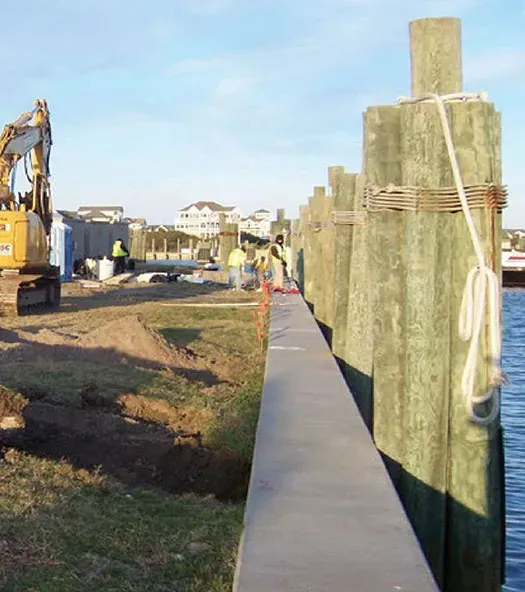Coastal landowners understand the importance of erosion control. They do today, and they have for thousands of years. Human history is full of examples of efforts put forth to stop the natural effects of wave action and coastal flooding. Constantine I is credited as the ruler behind the ancient seawalls in Byzantium, some of which are still visible today. Yet, for as long as humans have built structures to keep the water out, water has been finding ways to creep back in.
Shorelines provide many advantages to populations of people, who count on rivers, lakes, and oceans to deliver abundant food, transportation, and connection to other lands. That fact is no less true today than it was when the first seawalls were constructed all those years ago.
Today’s seawalls are designed and constructed with the latest materials and methods, utilizing machinery and practices that reflect advances in human knowledge and experience. Modern seawalls are constructed out of many materials, including concrete, steel sheet pile, wood, and rock-filled wood structures. Seawalls are constructed in an effort to limit the negative consequences of wave action, tidal movement, and storm surges.
Still, even as we build the best seawalls in human history, water still gets in. How is this possible?
Waves, Tides, Storms…and Scouring
Land and water interact in complex ways to erode, extend, and reshape the earth. For waterfront homes, communities, and public infrastructure assets like ports and ferry terminals, this interaction can sometimes lead to disastrous consequences.
Among the biggest threats to seawalls is the natural phenomenon that takes place when waves, tides, and storm surges come into contact with them. Because seawalls do not absorb the energy that waves, tides, and storm surges bring with them, that energy is typically directed downward and sideways. This downward-directed energy scoops out soil at the base of the seawall in a process called scouring.
Over many years, this natural scouring process can undercut the bottom of a seawall and lead to erosion behind it. As we know all too well, when water comes in, soil goes out.
Many of our nation’s most important coastal assets are protected by seawalls, some of which have fallen into serious disrepair. These assets are threatened when the long-term effects of scouring are manifested in the form of sinkholes and weak soils behind them.
Environmentally Friendly Solutions Needed
While environmental concerns are important wherever we consider them, perhaps nowhere are they more urgent than when considering our nation’s waterways and coastal areas. With so much rightfully-placed attention focused on maintaining and preserving our water resources, a critical concern for any seawall repair project must involve possible environmental impact.
What do you do when your ferry terminal, commercial port, or community seawall starts to develop sinkholes? You need a fast solution, but not just any solution will do. Of primary importance is the impact of any mitigation measure on the surrounding environment.
Thankfully, URETEK has just the right stuff.
URETEK 486 Star® Polymer
URETEK 486 Star® is a two-component, high-density, expanding thermoset polyurethane system that is environmentally inert and completely non-toxic. These properties make it the ideal choice for an environmentally friendly seawall repair project. Best of all, it’s industry-leading hydrophobic properties resist the underground water erosion that leads to seawall failure in the first place.
URETEK developed its polymer to be the ideal solution for under-sealing, filling voids, lifting settled pavement, stabilizing and stiffening weak soils, and for encapsulating and sealing buried infrastructure.
But when it comes to repairing failing seawalls, our polymer is the best in the business.
Trusted Vendor for Shoreline Infrastructure Repair
For over 30 years, URETEK has been a trusted, reliable partner for DOT officials in charge of ferry terminal maintenance and repair, city officials with seawall concerns, and for private property owners with shoreline erosion issues. Our URETEK Deep Injection® (UDI) application is the perfect solution for coastal structures showing the signs of failure due to erosion. With its rapid response and experienced crews, URETEK is the vendor most prepared to complete emergency seawall repair and standard maintenance tasks on time and on-budget.
Contact URETEK today to learn more about our speedy repair and maintenance services for your coastal infrastructure assets. Also, see our case studies to read about how our UDI application has successfully worked to extend the life of bulkheads, seawalls, and ports across the country.
